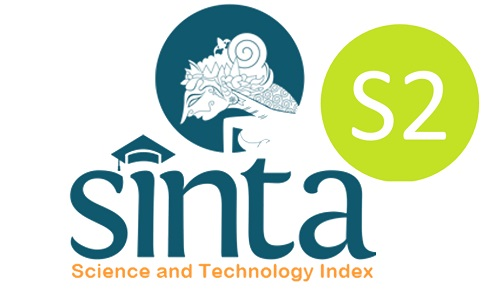PERSPECTIVES ON TEACHING ENGLISH AND TRANSFORMING VALUES OF CHARACTER TO BROADEN STUDENTS HORIZON
DOI:
https://doi.org/10.22373/ej.v1i2.184Keywords:
character education, character teaching, English teachingAbstract
A great demand of mastering English in globalization era has made English education in Indonesia valuable and popular. Problems in classroom, quality of teachers, teaching strategies and media are a plethora of topics that have been concerns to be developed. On another front, there is an effort to shape students’ character building which enables them to master social competence with the expected behavior and moral capacity. Students can be trained some certain good characters within the implementation of language teaching. By taking these two variables into account, success of learning can be achieved not only in language mastery, but also in students’ character.Downloads
References
Adisusilo, S. (2012). Pembelajaran Nilai Karakter: Konstruktivismen dan VCT se-bagai Inovasi Pendekatan Pembelajaran Afektif. Depok: RajaGrafindo Per-sada.
Berkowitz, M. & Bier, M. (2006). What Works in Character Education: A Research –driven Guide for Educators. Washington, D.C
Brown, H, D. (2002). Strategies for Success. New York: Pearson Education Compa-ny.
Buchori, M. (2007). Character Building dan Pendidikan Kita. Retrieved from http://paramadina.wordpress.com/2007/03/04/character-building-dan-pendidikan-kita/.
Cahyono, B.Y. & Widiati, U. (2011). The Teaching of English in Indonesia. Malang: UM Press.
Character Education Partnership (CEP). (2006). Principle 1. Retrieved from http://www.character.org/principle1?s=virtues
Freeman, D. L. (2000). Techniques and Principles in Language Teaching. New York: Oxford University Press.
Hafidhuddin, D. (2012). Pendidikan Karakter Berbasis Al-Quran. Depok: Rajawali Pers.
Harmer, J. (2007). The Practice of English Language Teaching (4th Edition). Hong Kong: Pearson Education Ltd.
Kemendiknas. Desain Induk Pendidikan Karakter, (2013), Retreived from http://pendikar.dikti.go.id/gdp/wp-content/uploads/Desain-induk pendidi-kan-karakter-kemdiknas.pdf.
Koesoema, D. (2007). Pendidikan Karakter: Strategi Mendidik Anak di Zaman Global. Jakarta: Grasindo.
Lickona, T. (1991). Educating for character: How our schools can teach respect and responsibility. New York, NY: Bantam Books.
Lickona, T., Schaps, E., & Lewis, C. (2007). CEP’s eleven principles of effective character education, Retrieved from http://www.character.org
Lickona, T. (2012). Mendidik untuk Membentuk Karakter: Bagaimana Sekolah dapat Memberikan Pendidikan tentang Sikap Hormat dan Tanggung Jawab. Jakarta: Bumi Aksara.
Malik, RS. (2012). Deep Learning and Academic Literacy – How they would contribute to character building?. In Samsudi (Eds), Enhancing Academic Literacy to Foster Conservation Values in Character Education, (pp.1-17). Semarang: Postgraduate Program Semarang State University.
Taqi-ud-Din al Hilali, M., & Muhsin, KM. (2000). Translation of the Meanings of The Noble Qur’an in the English Language. Madinah: Kingfahd Complex for the Printing of the Holy Qur’an.
Downloads
Published
Issue
Section
License
Proposed Policy for Journals That Offer Open Access
Authors who publish with Englisia journal agree to the following terms:
- Authors retain copyright and grant the journal right of first publication with the work simultaneously licensed under a Creative Commons Attribution License that allows others to share the work with an acknowledgement of the work's authorship and initial publication in this journal.
- Authors are able to enter into separate, additional contractual arrangements for the non-exclusive distribution of the journal's published version of the work (e.g., post it to an institutional repository or publish it in a book), with an acknowledgement of its initial publication in this journal.
- Authors are permitted and encouraged to post their work online (e.g., in institutional repositories or on their website) prior to and during the submission process, as it can lead to productive exchanges, as well as earlier and greater citation of published work (See The Effect of Open Access).









